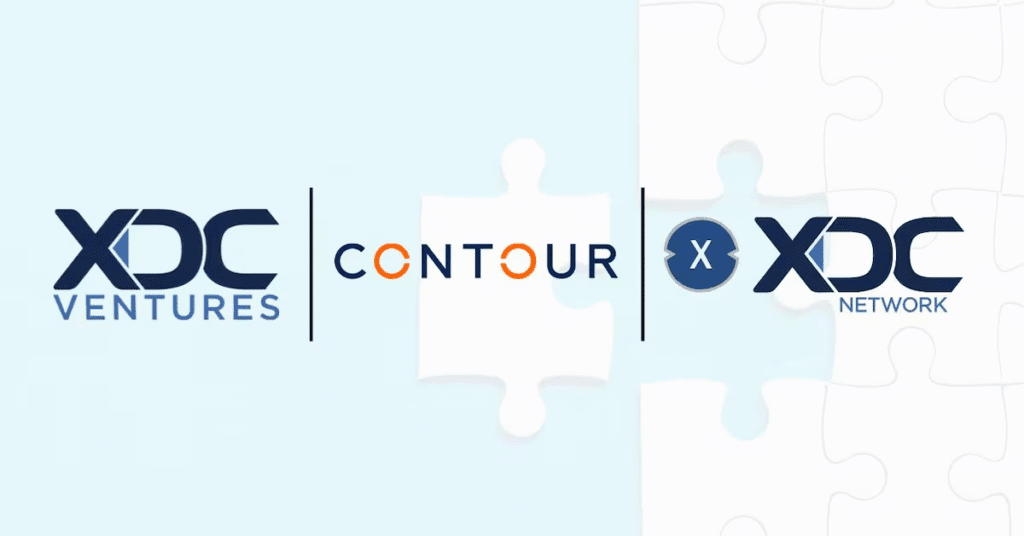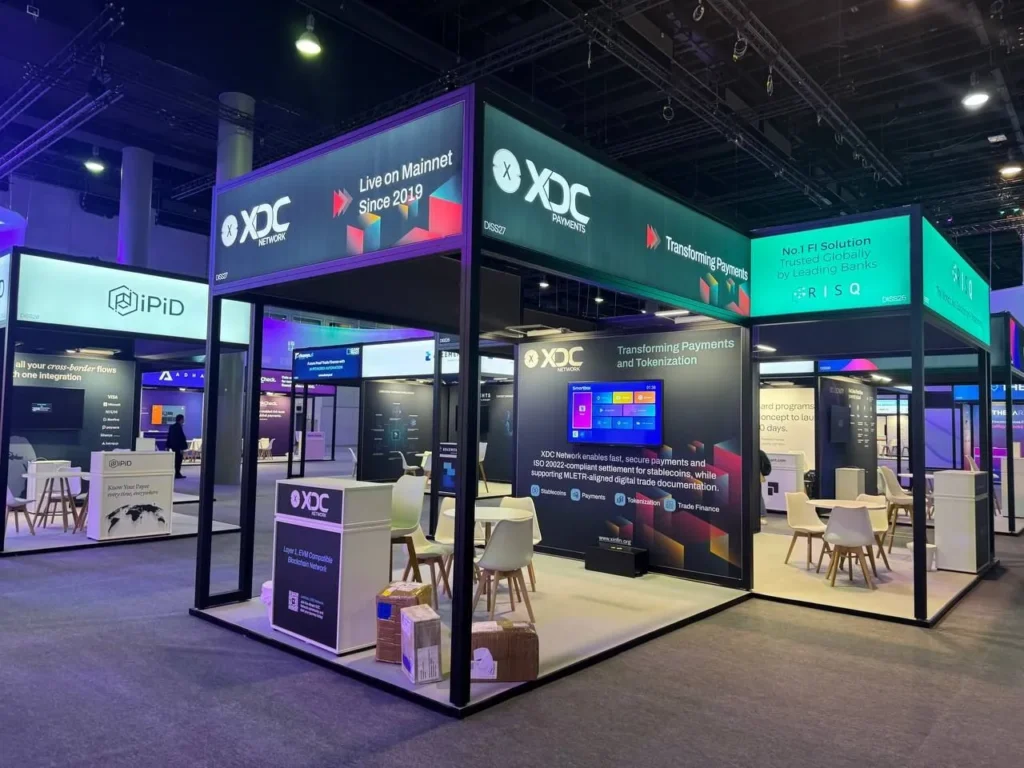The Bold Move That’s Changing the Face of Trade Finance
In a standout deal that signals a new era for global commerce, UAE-based XDC Ventures has acquired Contour Network, a trade-finance platform originally backed by major global banks. With this acquisition, XDC Ventures is stepping firmly into the world of digitised trade, real-world asset tokenisation and stable-coin-enabled settlement.
For many businesses and banks, trade finance has remained bogged down by legacy systems: paper letters of credit, slow cross-border flows, fragmented settlement rails and limited transparency. Contour’s platform was designed to tackle many of these issues. XDC Ventures’ acquisition signals that these pain points are ripe for disruption.
This is not just a merger for scale: it is a bold strategic pivot into blockchain rails, stable-coin settlement and real-time documentation workflows. The result? A potential leap forward for banks, corporates and trade-finance ecosystems around the world.

What Exactly Are They Buying and Why It Matters
Contour specialised in digitising the traditional bank instrument known as a letter of credit (LC) — a guarantee often used in international trade between buyers, sellers and their banks. Under its earlier structure, backed by banks like HSBC, Citi, Standard Chartered, BNP Paribas and others, Contour had made headway in digitising LCs and cross-border documentation.
The acquisition by XDC Ventures means that Contour’s technology, network and bank-consortium relationships will now be leveraged within the broader ecosystem of the XDC Network — a blockchain native platform built for real-world asset tokenisation, fast settlement and institutional workflows.
Key elements of the deal that elevate its importance:
- Contour will now be integrated with XDC’s blockchain rails, enabling faster settlements and token-based workflows.
- A “Stable-Coin Lab” will be launched under XDC Ventures to experiment with regulated stable-coins for trade-finance settlement, moving beyond mere documentation into payments.
- The acquisition signals a strategic push into new geographies, regulatory collaborations and pilot programmes across the US, EU, GCC and Asia.
This is more than a financial transaction — it’s a platform play where trade documentation, settlement and asset tokenisation are converging.
How the Architecture Will Shift: From Days to Real-Time
One of the biggest challenges in trade finance has been speed. Traditional workflows often span days or even weeks: banks verifying documents, coordinating across borders, handling currency flows and reconciling risks. Contour’s earlier platform reportedly reduced LC processing from days to mere hours in live trades.

By bringing in the XDC Network’s blockchain infrastructure — which supports features like near-instant settlement and ISO-20022 messaging — the newly combined platform aims to deliver a full trade-finance stack: documentation, guarantee issuance, token-based settlement and treasury optimisation.
In practical terms: a seller in Asia could present digital trade documents, the bank issues a letter of credit, the buyer triggers payment via a regulated stable-coin on the blockchain, and funds are settled in near-real-time. All parties can track status transparently, with audit trails, reduced operational cost and improved working-capital efficiency.
For banks and corporates, this means: less manual work, fewer intermediaries, better liquidity, faster settlement and lower costs. For trade corridors — especially those that are underserved or fragmented — the impact could be especially meaningful.
The Strategic Rationale: Why XDC Ventures Seized This Opportunity
There are several forces at play that make this acquisition strategically compelling:
- Trade Finance is Massive but Inefficient – Global trade relies heavily on LCs and guarantees; inefficiencies cost billions annually. Digitising the workflow and adding settlement innovations addresses a high-value pain point.
- Blockchain + Real-World Asset Tokenisation is Maturing – The idea of tokenising real-world assets (RWA) such as trade receivables, commodities, invoices or letters of credit is gaining traction across institutional finance. XDC Network positions itself as a hub for this.
- Stable-Coins as Settlement Rails – Traditional settlement systems are slow and costly; regulated stable-coins offer an alternate rail. XDC’s Stable-Coin Lab will run pilots to leverage this for trade.
- Regulatory Appetite is Growing – With frameworks evolving in major markets (US, EU, Asia, GCC), the timing is right for compliant, institutional-grade blockchain settlement solutions. XDC Ventures appears to be hedging for a future where regulation and innovation align.
- Regional and Global Ambition – Based in the UAE (a region aggressively pursuing fintech/blockchain innovation), XDC Ventures is well-placed to bridge Middle East, Asia and global corridors. The acquisition expands its institutional footprint and credibility.
In short, the acquisition sets the stage for a platform that bridges traditional finance (“TradFi”) and Web3/blockchain infrastructure — turning paperwork into programmable tokens, and making settlement faster, cheaper and more transparent.
What Could This Mean for Businesses, Banks and Trade Participants
For businesses engaged in international trade, especially SMEs and those trading across multiple jurisdictions, the potential benefits are significant: • Faster receipt of funds and reduction in working-capital lock. • Lower costs through automation and less manual reconciliation. • Greater transparency of trade-finance flows, with better risk visibility and lower counterparty friction.
For banks and financial institutions: • Ability to offer differentiated services: tokenised trade finance, faster settlement, new revenue streams. • Reduced operational overhead and back-office cost by replacing manual/legacy workflows. • New partnerships and ecosystems: collaborating with blockchain platforms, stable-coin issuers, fintechs and trade corridors.
For the broader trade finance ecosystem: • More efficient global trade flows, especially in emerging markets where banks are under-banked and documentation delays are significant. • Potential standardisation of digital trade-finance workflows, leading to faster adoption. • A shift from “paper + manual” to “digital + tokenised + programmable” trade infrastructure.
Of course, transition will not be overnight. Banks must align with regulators, integrate new systems, train teams and build trust in digital workflows. But the acquisition signals a meaningful step toward that future.
Challenges and Considerations Ahead
While the roadmap is promising, several hurdles remain: • Regulatory complexity – Using stable-coins for cross-border settlement triggers regulatory scrutiny in many jurisdictions (AML/KYC, licensing, currency controls). • Bank adoption – Even with successful pilots, large banks are cautious and risk-averse. Legacy systems may resist change. • Inter-operability – Systems, protocols and messaging standards need to align across borders, banks and blockchains. • Trust and scale-up – To become mainstream, the platform must demonstrate robustness, security and regulatory compliance at scale. • Adoption inertia – Trade finance tradition is entrenched; change management will be crucial.
XDC Ventures and Contour will need to navigate these carefully. The promise is strong, but execution will determine the real impact.
What’s Next: Roadmap and Global Implications
Here’s a look at what appears to be next steps: • The launch of the Stable-Coin Lab: pilot programmes with banks and corporates to test regulated stable-coin settlement for trade transactions. • Expansion into key geographies: U.S., EU, GCC and Asia are cited as focus regions — meaning the platform will seek regulatory frameworks and banking partnerships across continents. • API-based settlements: Development of APIs that connect legacy trade-finance workflows with blockchain rails, enabling smoother integration for banks and corporates. • Tokenisation of trade-finance assets: Beyond letters of credit, moving into tokenised receivables, commodities, invoices — real-world assets that can be traded or financed on blockchain infrastructure. • Scaling and ecosystem building: Building a network of banks, corporates, fintechs, regulators and blockchain partners to drive adoption and network effects.
In global terms, this acquisition could be one of the landmark deals in bridging TradFi and Web3 at scale. It signals that trade finance — long plagued by inefficiencies and manual steps — is now squarely in the sights of blockchain-native innovation. The ripple effects could touch everything from global supply chains to emerging-market trade corridors, and from capital-markets mechanisms to SME access to finance.

Why This Acquisition Matters for the Future of Global Trade
This deal matters not just because of its technical innovation, but because it speaks to the future of how global trade gets done. We’re looking at a world where: • Documents, contracts and guarantees become digital tokens on a blockchain. • Settlement moves from slow bank transfers and multiple intermediaries to faster, token-based rails. • Banks not only act as lenders or intermediaries, but as platform providers and network participants in blockchain ecosystems. • SMEs and corporates in emerging markets gain access to faster, cheaper trade-finance services, reducing friction and enabling growth. • Regulatory regimes evolve to support stable-coins, tokenisation and blockchain settlement — meaning the financial infrastructure of trade changes fundamentally.
The acquisition is not just a fintech story — it is a trade-economy story. The way goods move, money moves, risk is managed and liquidity flows could all shift. If XDC Ventures and Contour deliver on their ambition, we may look back on this as a turning point in trade-finance history.
Final Thoughts: A New Chapter in Trade Finance Begins
The acquisition of Contour by XDC Ventures is bold and forward-looking. It’s a statement that trade finance matters, that its inefficiencies are a problem worth solving, and that blockchain + stable-coins can be part of the solution. The road ahead will require smart execution, regulatory collaboration, partner alignment and trust building. But the prize is substantial: faster global trade, lower cost, greater transparency, and better access for banks and companies alike.
For anyone in the trade-finance ecosystem — whether banks, corporates, fintechs, or regulators — this is a story worth watching. The platform is shifting. The rails are changing. And with that, global trade may finally step into its digital future.
Do follow UAE Stories on Instagram
Read Next – Four Seasons Hotel Abu Dhabi at Al Maryah Island Earns Prestigious MICHELIN Key















